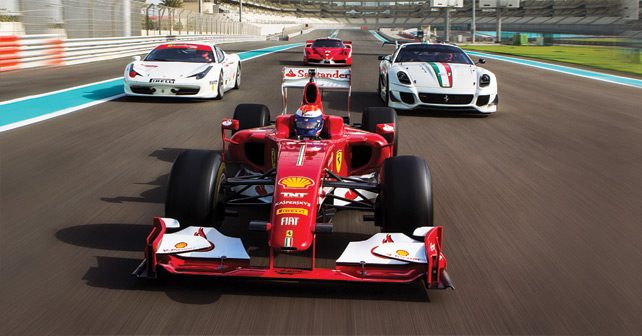
Joe delves into Ferrari’s IPO prospectus to get an insight into the murky world of F1 accounting...
August is a quiet time in Formula 1, as teams draw breath before the second half of the season. This sets off at Spa at the end of August, where Ferrari will celebrate its 900th Grand Prix. It remains to be seen whether Ferrari can close the gap on Mercedes-Benz in the second half of the year, but the Scuderia is going to be in the news come what may with its planned IPO on the New York Stock Exchange – which will come in late October, about the same time as Bernie Ecclestone celebrates his 85th birthday.
The IPO is intended to raise billions to help Fiat Chrysler Automobiles (FCA) – the current owner of the business – service its substantial debts, which have been created as it tries to become a major global player in the automobile industry and fight the good fight against the likes of Toyota, General Motors and Volkswagen. The IPO is significant for Formula 1 because it’ll mean that the company will be forced to give more details about its budgets – since, as a public company, it’ll be required to comply with various corporate governance and financial reporting regulations.
There are an impressive 161 mentions of Formula 1 in the 250-odd page prospectus that has been issued, although key figures are still being left out until the day of the IPO. What we know from this vast document is that Ferrari shipped 7,255 cars in 2014, recorded revenues of €2.7 billion, and a profit of €265 million – and still managed to fund a competitive F1 operation. The company says that its intention is to expand production to meet demand in new markets, without damaging the Ferrari brand. The goal is to reach around 10,000 deliveries a year, without the price dropping.
The company is currently 90 percent-owned by FCA, with the remaining 10 percent belonging to Piero Ferrari. The new Ferrari holding company, Ferrari NV, will be 24 percent-owned by Exor (basically the Agnelli Family), with Piero Ferrari maintaining his 10 percent stake, and around 66 percent of the firm being in the hands of the public.
However the prospectus reveals that the voting shares are slightly different, with Exor holding 35.8 percent and Piero Ferrari 14.9 percent, which means that together they will control 50.7 percent of the votes – and thus retain full control of the business. The question of how much Ferrari spends on Formula 1 is an interesting one – and not one that the firm is about to reveal. The company says that it uses F1 as its primary marketing and promotional tool, but the budget for this is not listed as a marketing cost – instead it’s hidden away in the firm’s research and development budget, which in 2014 was €541 million. This was up 12.9 percent from €479 million in 2013. This covers all development of the road cars and the racing machinery. However, the paperwork does reveal that €56 million of the increased expenditure was “driven by the group’s efforts related to the continued development of the Formula 1 car.”
The 2013 figure, incidentally, was up 11.1 percent from €431 million in 2012, and €26 million of this increase was for F1 engine development for the new V6s and to pay Toyota for the use of the Cologne wind tunnel while the Ferrari facility was being upgraded. Similarly, the company revealed that its sponsorship, commercial and brand revenues were €417 million. The problem is that this figure includes merchandising, licensing and royalties, as well as sponsorship.
Not all of these are wholly related to F1, and even then the budget doesn’t include the rental of F1 engines to others F1 teams, which is included in the company’s overall engine sales figures. What we can learn from this is that the revenues were up a small amount from 2013 (€412 million), which in turn was up seven percent from 2012, when the total was €385 million. The prospectus reveals that the €27 million increase was “mainly attributable to the renegotiation of the terms of the agreement that governs the management of the Formula 1 World Championship.”
Ferrari said that it uses these distributions “to defray part of the costs associated with Scuderia Ferrari, including the costs of designing and producing a set of single-seaters each year and the costs associated with managing a racing team, including hiring drivers – who are among the most highly paid athletes in the world.” What the paperwork does reveal is that at the end of 2013 there were overdue payments from customer teams of €25.2 million, of which €19.3 million was collected in the course of 2014, with €4 million being written off.
The paperwork also reveals that the new racing headquarters cost the company €26 million in 2014, in addition to €10 million in 2013. The prospectus also confirms that Ferrari has an option, valid until 2020, to purchase “a fixed number of shares in Delta Top Co for a fixed price.” This would mean that Ferrari would become a shareholder in the Formula One Group.
Needless to say, the prospectus makes for interesting reading. And surely, in the years to come, the filings required by the US Securities and Exchange Commission will end up providing more details about how Ferrari – and in turn the murky world of F1 accounting – works…
Joe Saward has been covering Formula 1 full-time for 27 years. He has not missed a race since 1988.























Write your Comment